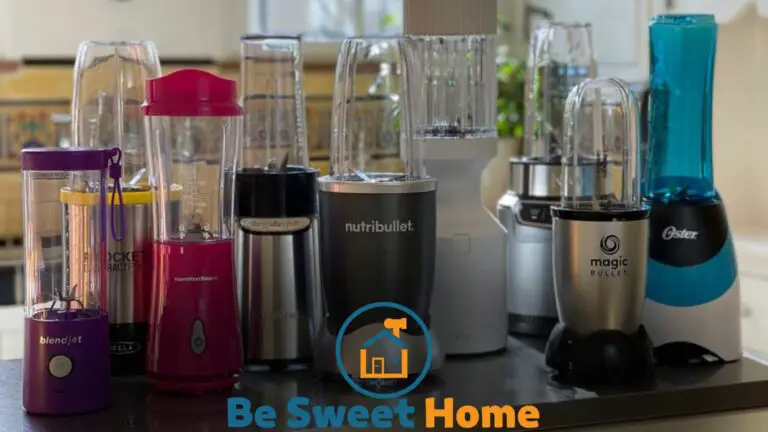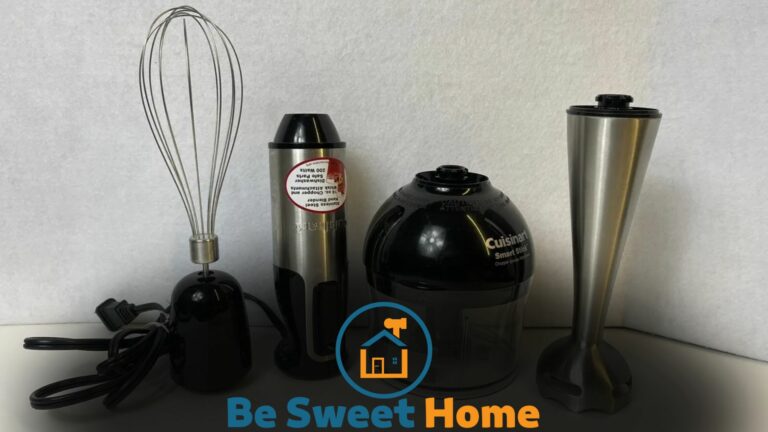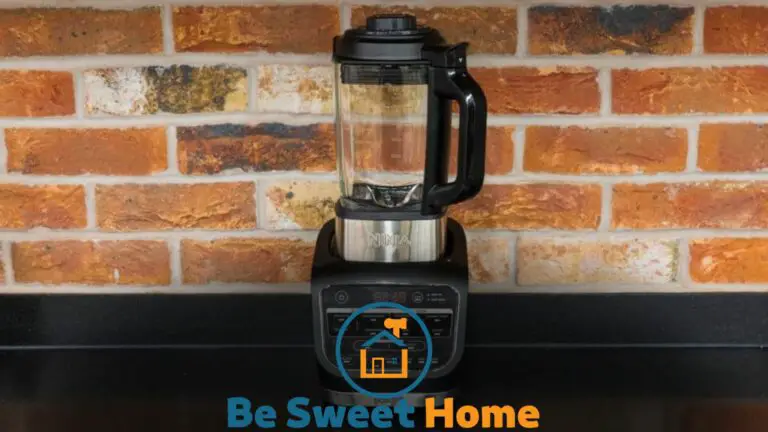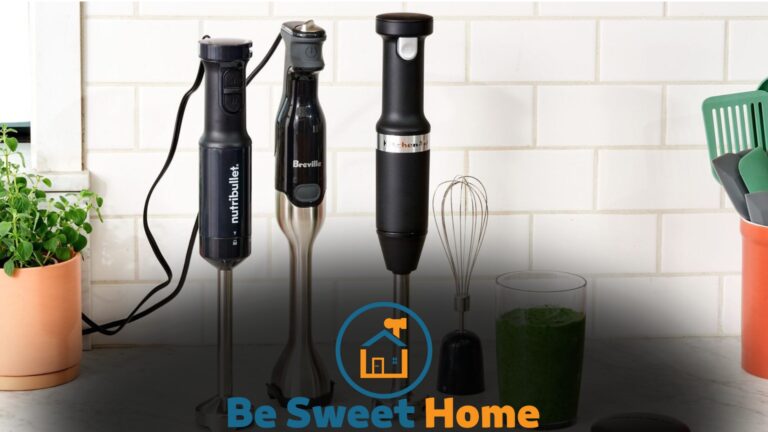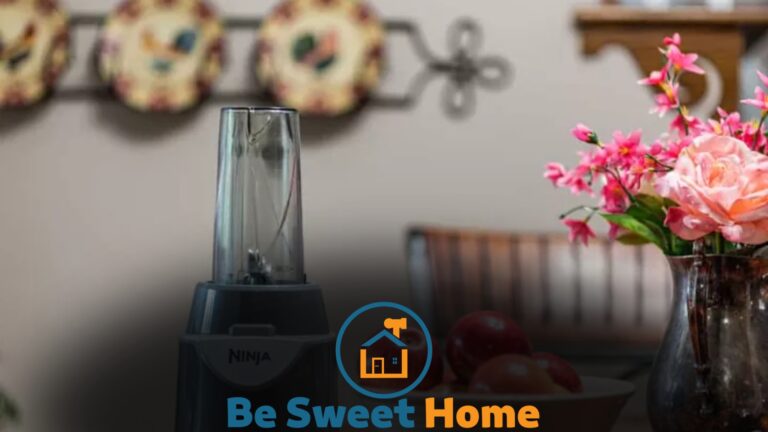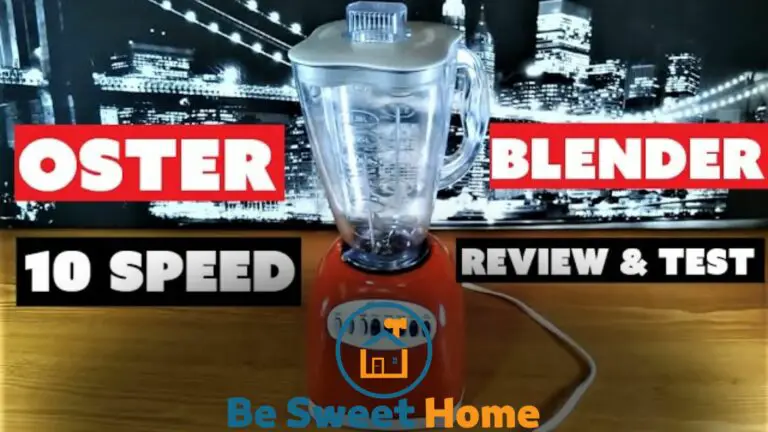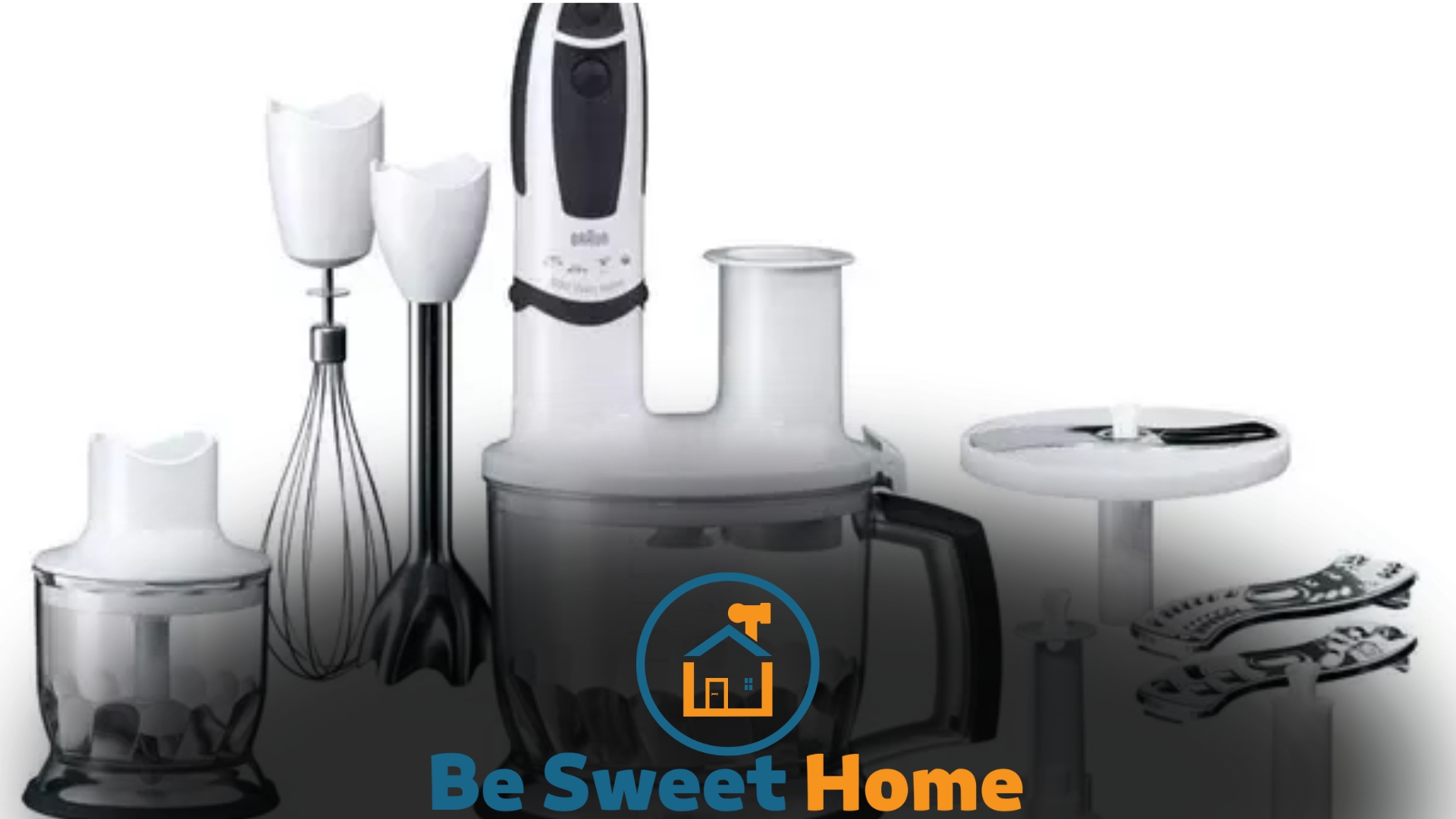

Yes, you can use a blender instead of a mixer for many tasks. The two appliances, however, may deliver different textures and consistencies.
A kitchen is not just a cooking space but a hub of culinary art where appliances like blenders and mixers play a crucial role. Blenders are versatile tools that can puree, liquefy, and mix ingredients with a high smoothness.
They are perfect for making smoothies, soups, and sauces. On the other hand, mixers are typically designed for tasks requiring a lighter touch, such as whipping cream or kneading dough.
While you can interchange these appliances in some scenarios, knowing that the outcome might vary is crucial. A blender can often stand in for a mixer, especially in recipes that demand the incorporation of liquids or creating smooth textures.
Yet, a mixer is generally preferable for optimal results for more specific tasks like creaming butter and sugar or aerating batter.
Blender vs Mixer: Functionality Face-off
Think of your kitchen. It’s a hub of gadgets, each with its role. Among these, blenders and mixers stand out. They both mix, crush, and blend. They look similar, too. So, could a blender replace a mixer?
Let’s break down their functions and find out.
Key Features of Blenders
- Sharp Blades: Perfect for crushing ice or blending smoothies.
- High Speed: Spin fast to create smooth, lump-free textures.
- Varied Settings: Multiple speed options adjust for different tasks.
- Pitcher Design: Tall and narrow to funnel ingredients to the blades.
- Liquid Capacity: Ideal for soups, purees, and liquid-based recipes.
Blenders excel at transforming solid ingredients into liquid delights. Their powerful blades can tackle challenging tasks.
Mixer Functions and Uses
- Attachments Galore: Whisks, beaters, and dough hooks mix with precision.
- Gentle Folding: Mixers excel at incorporating ingredients without crushing.
- Specific Speeds: Offer control for tasks from whipping cream to kneading dough.
- Bowl Design: Wide and deep to keep dry ingredients inside while mixing.
- Solid Ingredients: Best for doughs, batters, and frosting.
Mixers specialize in tasks that need a gentle touch. They blend, whip, and knead with care.
A blender and a mixer serve distinct purposes. Blenders crush and liquefy. Mixers blend and aerate. Before choosing between them, consider your cooking habits. For smoothies and soups, a blender shines. For cakes and bread, pick a mixer.
Each tool makes kitchen work easier. Understand their strengths, and you’ll pick the right one every time.
The Effects on Texture and Consistency
The Effects on Texture and Consistency often dictate the success of a culinary creation. Tools like blenders and mixers play critical roles, but are they interchangeable? Understanding how each affects food can help make the right choice for your recipe.
How Blenders Impact Food Texture
Blenders are powerful tools designed for creating smooth textures. They work best with liquid-based ingredients. With high-speed blades, blenders can:
- Pulverize fruits and vegetables into smoothies.
- Crush ice for frozen drinks.
- Pure soups to a silky consistency.
Yet, blenders can struggle with thick or doughy mixtures. This can result in an uneven mix or even damage the blender.
Mixers and Texture Control
Mixers offer more control over the texture. They are ideal for batters and doughs. With adjustable speed settings, mixers can:
| Speed Setting | Resulting Texture |
|---|---|
| Low | Gently combine ingredients without over-mixing. |
| Medium | Cream butter and sugar for a light, fluffy mix. |
| High | Whip cream or egg whites to stiff peaks. |
For dough, mixers with dough hooks can knead to the perfect consistency. Blenders often lack the gentle touch needed for delicate tasks.
Culinary Considerations for Substituting Appliances
Choosing the right appliance for your cooking task is crucial. A handy mixer or a powerful blender both shine in different scenarios. Yes, swapping them sometimes works.
But it’s important to know when and how you can do so without affecting the taste and texture of your recipes. Let’s explore the culinary switch-ups that might work for you.
Suitable Blender Recipes
Blenders excel with liquids and soft foods. Here’s what you can whip up:
- Smoothies: Toss fruits and liquids in and blend until smooth.
- Soups: Puree-cooked vegetables and broth for a silky finish.
- Sauces: Blend tomatoes, herbs, and spices for a quick sauce base.
- Batters: Mix pancake or crepe batter to the perfect consistency.
Recipes That Require a Mixer
Mixers, on the other hand, specialize in more complex tasks needing aeration and precision. These recipes need a mixer’s touch:
| Recipe | Reason for Mixer |
|---|---|
| Bread Dough | Needs steady kneading for gluten development. |
| Whipped Cream | Requires consistent whipping for fluffy peaks. |
| Meringues | Demands a stable egg white base for volume. |
| Cookies and Cakes | Relies on creaming butter and sugar for texture. |
Assessing Power and Performance
Power and performance are critical when choosing a kitchen gadget. They impact how well and how quickly we can prepare food. So, deciding between a blender and a mixer is essential. Let’s explore which tool is best for your cooking needs.
Blenders – Power for Pulverizing
Blenders shine in their power to liquidate. They take on tough jobs like crushing ice and making smooth purees. Most have strong motors. This helps them to handle hard ingredients without a hitch. Let’s break down what makes blenders powerful:
- High-wattage motors provide the force needed.
- Sharp blades can cut through items fast.
- Speed settings let you adjust the intensity.
You can easily turn raw ingredients into velvety smoothies or soups with a high-performing blender.
Mixer’s Efficiency in Mixing Ingredients
Mixers excel at blending softer ingredients with grace. They mix batter and dough to the perfect consistency. Typical mixers may not be as powerful as blenders, but they specialize in precision:
- Multiple attachments handle various mixing tasks.
- Adjustable speeds give precise control over the texture.
- Consistent motion ensures even mixing.
A good quality mixer is a baker’s best friend. It balances lower power with dedicated mixing capabilities.
Pros and Cons of the Swap
The kitchen is home to many gadgets, each with its purpose. Sometimes, tools such as blenders and mixers seem interchangeable. Understanding the pros and cons of substituting a blender for a mixer is crucial for home cooks and baking enthusiasts.
This comparison will highlight the benefits and drawbacks to help determine when a blender can effectively replace a mixer.
Convenience and Versatility of Blenders
Blenders shine in their convenience and versatility. Here are some key advantages:
- Easy to Clean: Blenders often have fewer parts and are simpler to wash.
- Space-Saving: They typically take up less counter space.
- Multifunctional: Blenders handle various tasks beyond mixing, like pureeing and crushing ice.
For most liquid-based recipes, a blender can confidently step in. It’s ideal for smoothies, soups, and shakes. Its ability to create a smooth, lump-free consistency is a major plus. But what happens when a recipe calls for more precision?
Limitations To Consider When Using a Blender
Using a blender instead of a mixer comes with certain limitations:
- Whipping Challenges: Achieving the right texture in whipped dishes can be tough.
- Overmixing Risk: Blenders can overwork the batter, affecting the final product.
- Dough Handling: Dense doughs are often too much for a blender.
For tasks requiring gentle folding or specific textures, mixers outperform blenders. Also, kneading dough is usually beyond a blender’s capability.
It’s important to weigh these factors before making the switch.
| Appliance | Convenience | Versatility | Suitable Tasks |
|---|---|---|---|
| Blender | High | Wide range (except dough) | Liquid recipes, purees, crushing ice |
| Mixer | Varies by type | Specific to mixing tasks | Baking, doughs, whipping |
Practical Tips for Appliance Substitution
Kitchen innovation often means using one appliance in place of another. Whether out of necessity or creativity, substituting a blender for a mixer can be smart.
But to do so effectively, certain adjustments and considerations are crucial. This section offers practical tips for those willing to explore the versatility of kitchen appliances.
Adjusting Recipes and Techniques
Using a blender instead of a mixer might require some recipe tweaks. The goal is a successful dish, so here are simple changes to make:
- Reduce the liquid – Blenders often need less liquid to operate efficiently.
- Cut solid ingredients – Smaller pieces blend more easily.
- Pulse, don’t puree – For doughs or batters, use brief pulses to prevent overmixing.
Technique alterations also help. Consider these:
- Start at a low speed and gradually increase.
- Use a spatula to scrape down the sides.
- Avoid overfilling to enable even mixing.
Maintenance Implications
Appliance longevity matters. Blenders and mixers differ in design. Hence, they require distinct care. Here’s how to keep your blender in tip-top shape:
| Blender Care Tips |
|---|
|
|
|
|
|
|
Remember, harsh ingredients can cause wear. Address spills and splatters to prevent sticky residues.
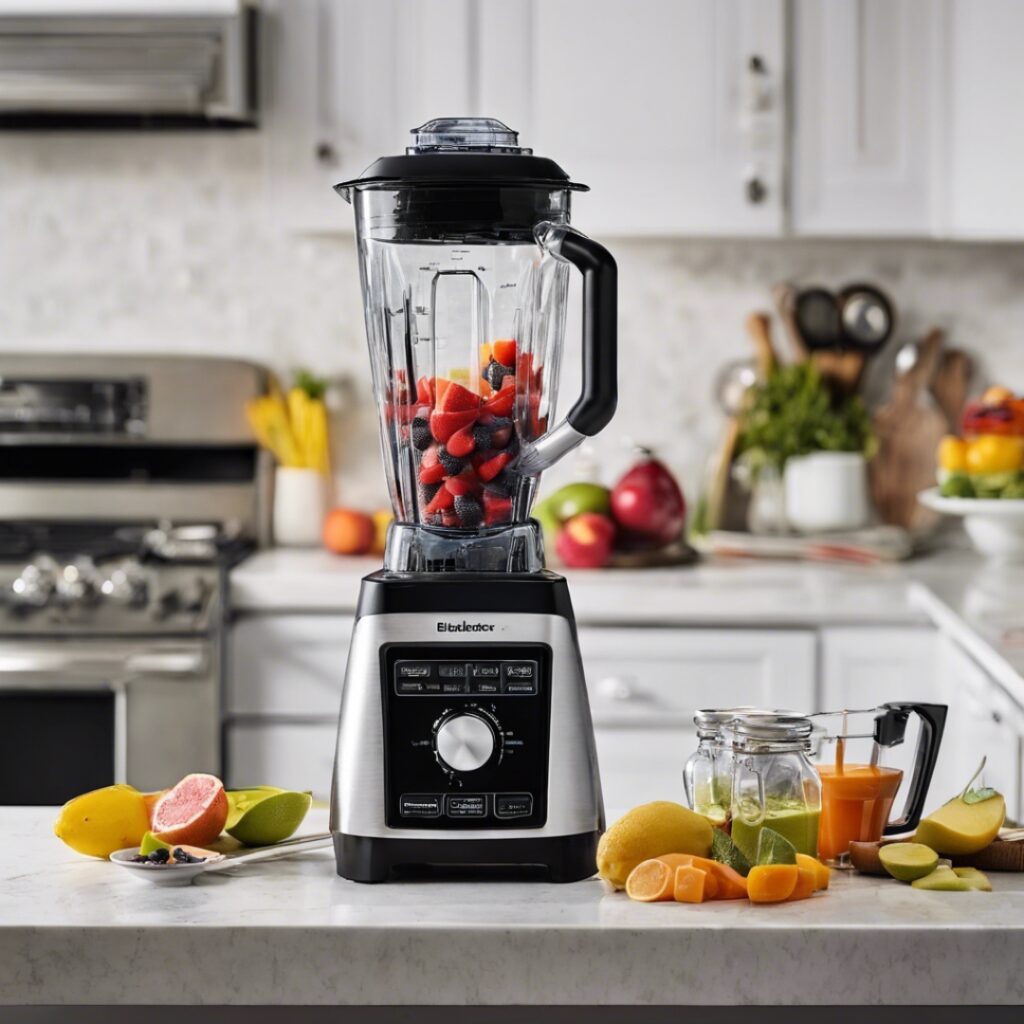
Frequently Asked Questions
Can Blender be Substituted for Mixer?
Blenders can often serve as mixer substitutes, especially for liquid-based tasks, but might not achieve the desired texture for doughs or batters.
What Are Blenders Best for in Cooking?
Blenders excel in pureeing, liquefying, and emulsifying ingredients, making them ideal for smoothies, soups, and sauces.
When Should I Use a Mixer?
Use a mixer for tasks that require aeration, such as whipping cream or kneading dough, where a blender would not be as effective.
Is a Blender Capable of Mixing Dough?
Blenders aren’t typically designed for mixing dough; it could lead to uneven texture and potentially damage the blender’s blades.
Can I Make Cake Batter With a Blender?
While possible, using a blender for cake batter might not incorporate enough air, resulting in a denser cake than using a mixer.
Conclusion
Experimenting in the kitchen can spark creativity, and using a blender instead of a mixer is no exception. For many recipes, this appliance swap is both possible and practical. Embrace the versatility of your blender and explore new culinary techniques.
Remember, while the blender can often stand in for a mixer, it may deliver different textures and results. Happy blending!

